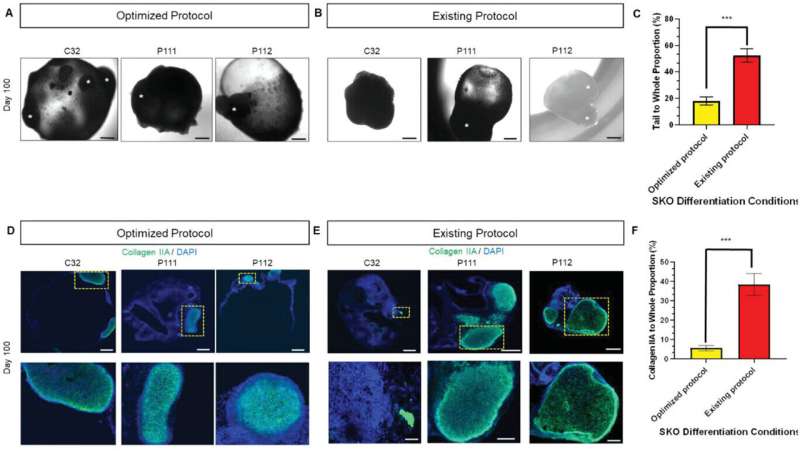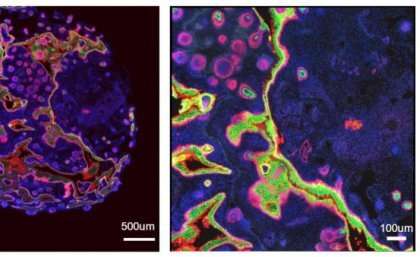This article has been reviewed according to Science X's editorial process and policies. Editors have highlighted the following attributes while ensuring the content's credibility:
fact-checked
trusted source
proofread
Lifelike lab-grown skin developed from human stem cells

Queensland researchers have become the first in Australia to use human stem cells to generate fully functioning skin tissue in a laboratory, a significant step toward better treatments for severe burns and wounds.
The skin tissue, produced by The University of Queensland's Frazer Institute and Metro North Health's Herston Biofabrication Institute, can develop hair follicles and neurons as well as sebaceous and sweat glands. A research paper on the process has been published in the journal Small.
Project leader Dr. Abbas Shafiee said the generated skin mimics that of the human body more closely than existing skin substitutes.
"We used a variety of stem cell lines and tested different procedures to grow skin organoids, which are 3D skin tissues created by researchers in a laboratory," Dr. Shafiee said.
"Human stem cells were first converted into cells which can grow to be any tissue in the body.
"These 'induced pluripotent' stem cells were then formed into spheres, which underwent four months of differentiation to produce the skin organoids.
"This has the potential to improve the quality of life of patients with severe burn injuries, and those who live with the pain caused by scarring from previous skin grafts."
Professor Kiarash Khosrotehrani said the technology will allow researchers to design new strategies in areas such as wound care, disease modeling and hair transplantation.

"Researchers and clinicians being able to produce more realistic skin could be transformative for people who have suffered severe wounds or burns," Professor Khosrotehrani said.
"The wound site will be less irritated and look more like the rest of the patient's skin."
The researchers hope to progress toward translational studies of the technology, with prospects leading to clinical applications.
The research was a collaboration between the Experimental Dermatology Group at UQ's Frazer Institute and Metro North Health's Herston Biofabrication Institute.
More information: Abbas Shafiee et al, Development of Physiologically Relevant Skin Organoids from Human Induced Pluripotent Stem Cells, Small (2023). DOI: 10.1002/smll.202304879
Provided by University of Queensland





















